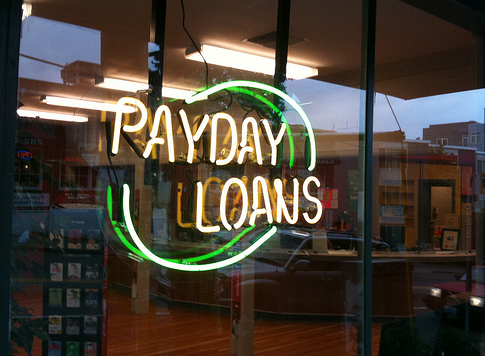Banks Ditched Payday Lending-Like Programs, But What’s Next?

(scurzuzu)
Since the beginning of January, Wells Fargo, U.S. Bank, Fifth Third Bank, Regions Bank, Bank of Oklahoma and its affiliates and Guaranty Bank responded to new regulatory pressure by discontinuing their deposit advance programs. However, many of the banks said they plan to develop an alternative short-term credit option for customers.
The National Consumer Law Center wants to make sure those new programs offer affordable, responsible small dollar loan options for consumers. And one way banks can achieve that is by capping the annual percentage rate at no more than 36%.
While a 36% APR is still a relatively high interest rate for a small loan, it would be a marked improvement to the typical payday loan APR of 200-300%.
The report points out the lower rate has been endorsed repeatedly at the state and federal level, results in payments that consumers can realistically afford and gives lenders incentive to offer longer term loans with a more affordable structure.
“The foundation of every responsible loan, whether it is a mortgage or a $300 loan, is ensuring that the consumer has the ability to repay the loan while meeting other expenses without reborrowing or entering into a cycle of debt,” Lauren Saunders, managing attorney for the NCLC says in a statement.
Other criteria set forth in the document that banks should consider are:
- Underwriting for ability to pay, not for ability to collect.
- Amortizing installment payments instead of balloon payments.
- At least 90 days to repay the loan.
- No check holding or required (or coerced) automated repayment.
Banks’ deposit advance services differed little from the typical storefront payday loan operation – both offered high-interest, short-term loans meant to get consumers out of emergency financial situations, but in reality have been found to trap them in an ongoing cycle of debt.
Criticism over bank-backed short-term, high-risk loans grew louder in the past several years, both from consumers and regulatory agencies.
Last summer, a California woman told a Senate panel how a $500 loan from Wells Fargo’s Direct Deposit Advance program resulted in $3,000 in fees.
In November, the Federal Deposit Insurance Corporation (FDIC) and the Office of the Comptroller of the Currency (OCC), which oversee institutions such as Wells Fargo and U.S. Bank, issued a 22-page guidance document essentially telling the banks to end payday loan-esque practices.
Want more consumer news? Visit our parent organization, Consumer Reports, for the latest on scams, recalls, and other consumer issues.

